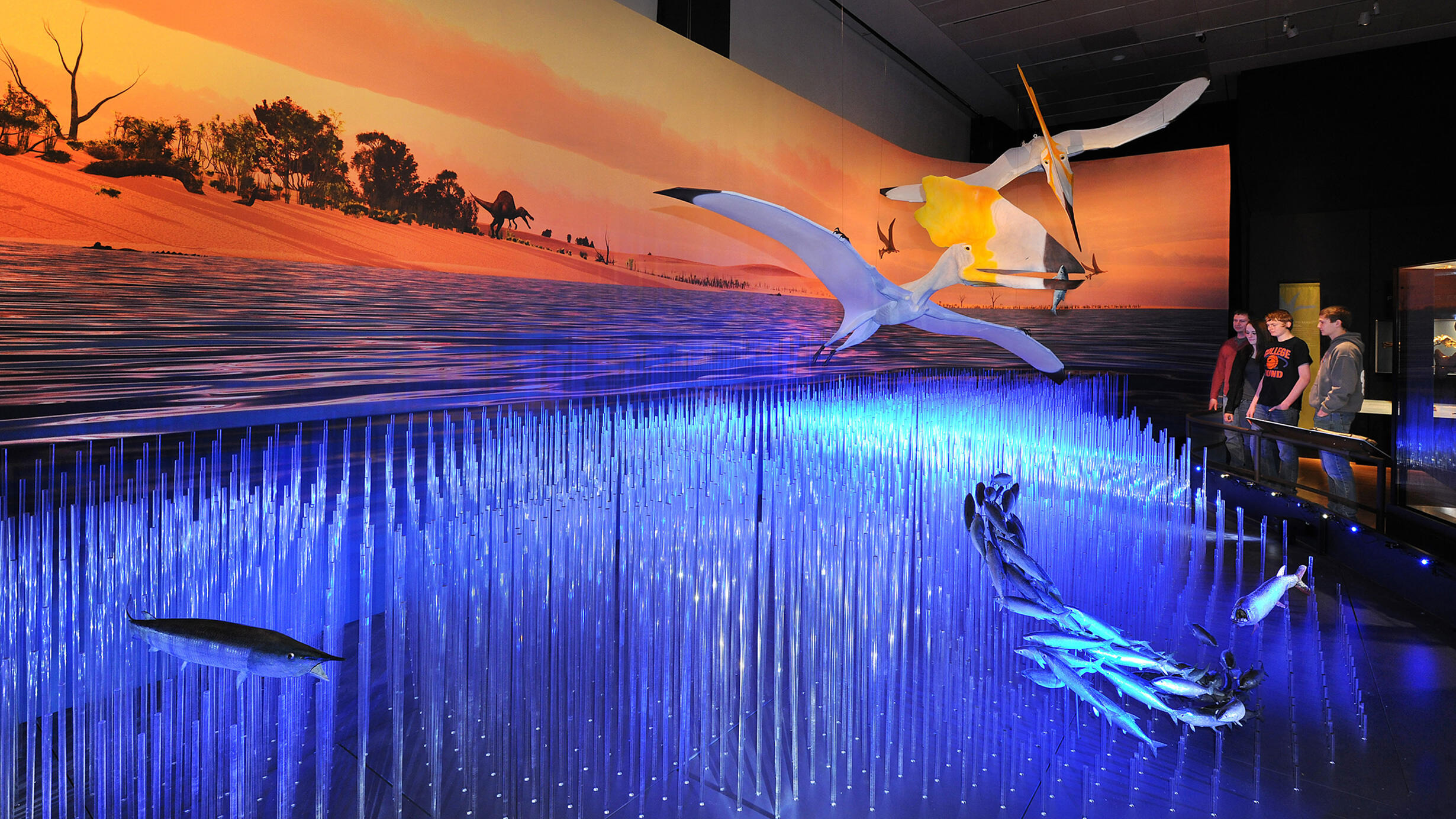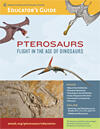Pterosaurs: Flight in the Age of Dinosaurs

They flew with their fingers and walked on their wings. Some were the size of a fighter jet while others were smaller than a sparrow. Millions of years ago, the skies were ruled by pterosaurs.
Neither birds nor dinosaurs, pterosaurs were flying reptiles that flourished for more than 150 million years. Step back in time and learn about the diversity of pterosaurs, their unique wing-finger anatomy, and impressive capabilities for flight and locomotion.
Highlights
A combination of rare fossils, life-size models, and hands-on interactives bring these ancient animals to life.
Get a first-hand look at the fossils that have helped paleontologists learn about these amazing animals, use your body to pilot a pterosaur over a prehistoric landscape in a virtual flight lab, and encounter spectacular life-size models of pterosaurs including giants such as Quetzalcoatlus northropi.
D. Finnin/© AMNH
R. Mickens/© AMNH
D. Finnin/© AMNH
R. Mickens/© AMNH
D. Finnin/© AMNH
D. Finnin/© AMNH
D. Finnin/© AMNH
C. Chesek/© AMNH
Key Questions
- What were pterosaurs?
- How diverse were pterosaurs?
- How did pterosaurs fly?
- How do scientists use fossils to study pterosaurs?
Reviews
"A thoroughly entrancing new exhibition."
– The New York Times
"The exhibit is brimming with fun facts."
– Science
Request More Information
Contact us to request availability for hosting this traveling exhibition.

Educator's Guide
Browse More
Pterosaurs: Flight in the Age of Dinosaurs is organized by the American Museum of Natural History, New York (amnh.org).